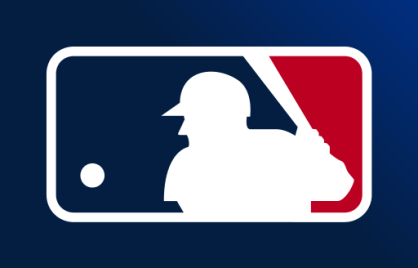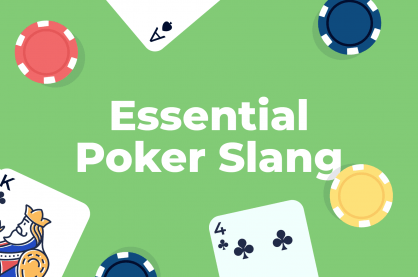Understanding Poker Table Positions (And Why They Are SO Important!)
Poker Positions: What You Need to Know
- Poker table positions, sometimes known as poker poses, are vital as they influence your decisions and potential profits in a game. They can broadly be divided into early, middle, and late positions.
- Early poker positions, like the small blind, big blind, and the under the gun poker position are less desirable as they offer less information about other players’ actions.
- Middle poker positions provide a bit more information than early positions, but players still need to be cautious about the actions of those in late positions.
- Late poker positions, like the button and the cut-off, are the most beneficial as players have the most information at their disposal before they need to act.
- The understanding and effective use of poker table positioning can help players make more calculated bets, poker bluffs, and overall strategic decisions, improving their chances of success.
- Playing free video poker is an excellent way to experience playing from all the different poker positions and sharpen your game!
Poker table positions refer to where each player is seated at a casino poker table. A player’s position at the poker table determines when they can act during the game.
The same applies when playing online poker or video poker. Each seat at the table corresponds to a different position. Understanding the concept of position in poker is absolutely critical to your success in the game.
In this guide, we’ll be taking a deep dive into the different poker positions, what they mean to your game, and how to play from each position.
What Are The Poker Table Positions?
At a typical poker table, there are nine different positions – determined by your proximity to the ‘Dealer Button.’ Poker table positioning rotates clockwise after each hand is finished, meaning you will have the opportunity to play in all positions around a poker table. You might hear or see the positions abbreviated as poker slang too (ex. in poker Under the Gun is “UTG”).
- SMALL BLIND (SB)
- BIG BLIND (BB)
- UNDER THE GUN (UTG)
- UNDER THE GUN + 1 (UTG+1)
- MIDDLE POSITION (MP)
- LOJACK (LJ)
- HIJACK (HJ)
- CUT-OFF (CO)
- BUTTON (BU)
Remember that these are all in relation to where the Dealer Button is located (it will usually look like a small circle… in Canada, they call it the ‘puck’!). Small blind is immediately left of the Dealer Button… BB is to their left… UTG is to their left… UTG+1 is to their left… and so on.
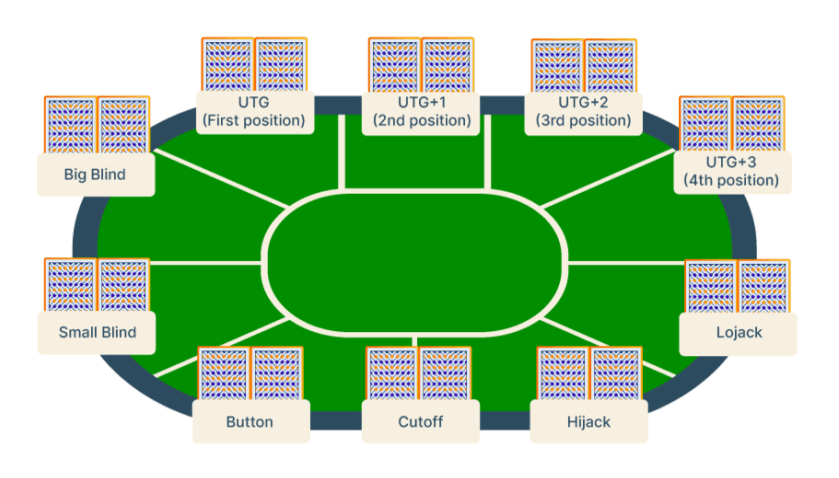
The Poker Positions Explained
Let’s get into a little more detail with each of these poker position names to answer the question, what is position in poker?
SMALL BLIND (SB)
This player sits directly to the left of the button and places a mandatory bet before the flop, known as a BLIND bet. It’s called a blind bet because it must be placed without viewing your cards. The SMALL BLIND bet is smaller than the BIG BLIND bet. For example, in a $1/$2 poker game, the SMALL BLIND must put in $1 preflop.
Small Blind Strategy: Play the SMALL BLIND very conservatively, as it is a significant disadvantage to be in this position. Fold frequently.
BIG BLIND (BB)
This player sits directly to the left of the SMALL BLIND and places a larger mandatory bet before the flop.
Big Blind Strategy: In cash games, play this position conservatively and fold unless you have a very good hand, as you have to act first after the flop. In tournaments, you may need to play a wider variety of hands since the big blind can represent a significant portion of your chip stack.
For example, if you have 10,000 chips and the big blind is 2,500 chips, folding before the flop would be costly, so players often ‘defend’ their big blind with a wider range of hands.
UNDER THE GUN (UTG)
This player sits directly to the left of the BIG BLIND and must act first before the flop. All eyes are on them and it’s a high pressure predicament — hence the term “under the gun!”
Under the Gun In Poker Strategy: The UTG player is at a disadvantage because they must decide to raise or fold preflop without knowing what the other players will do. Making good decisions is easier with information about opponents’ hands. Even after the flop, the UTG player still acts relatively early. Fold often and only play the top 10% of your best poker hands.
UNDER THE GUN+1 (UTG1)
This player sits directly to the left of UTG and faces similar pressure as UTG due to the early position.
Poker Under the Gun+1 Strategy: Play tight and lean towards folding. Aim to play only the top 10-15% of hands, folding all others.
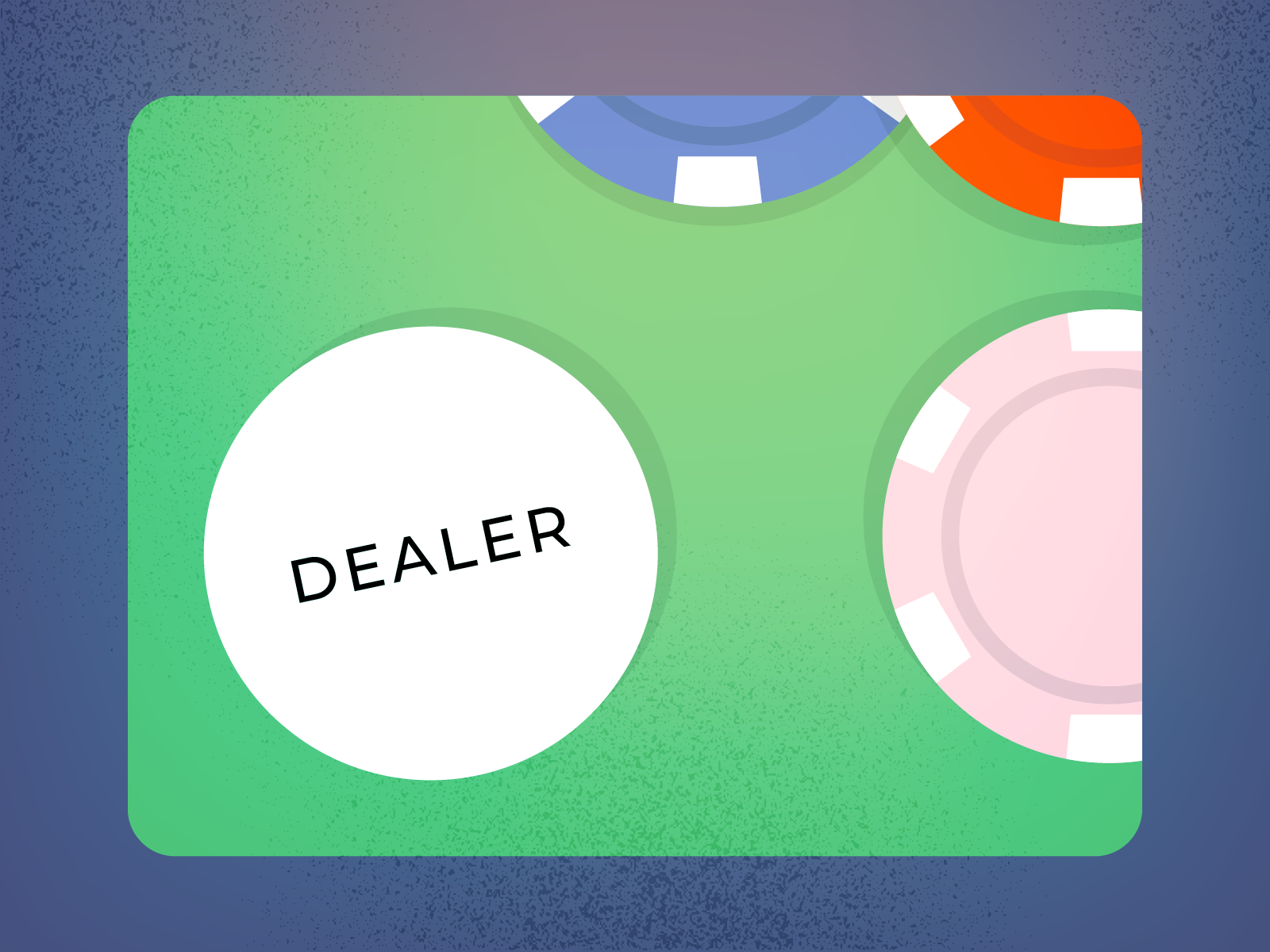
MIDDLE POSITION (MP), LOJAK (LJ), HIJACK (HJ)
Positions from MIDDLE POSITION through HIJACK are played similarly in poker.
Middle Position – Hijack Strategy: You can play approximately 20-25% of hands from these seats. Middle table positioning can be challenging due to being sandwiched between players, making it hard to extract value when you hit a hand.
For instance, if you bet after the first player checks on the river and another player is yet to act, it becomes obvious you likely have a strong hand like a straight or flush. To counter this, some advanced players choose to re-raise from these positions to encourage folds from players behind and avoid being trapped between opponents or “stuck in the middle.”
CUT-OFF (CO)
The CUT-OFF (CO) is the seat just before the button, making it the second best of the positions around a poker table.
Cut-Off Strategy: Unlike earlier positions where folding is often the safest choice, in the CO you should lean towards raising if no one has raised before you. There are only three players left to act after you, making it less likely one of them has a very strong hand.
Compare this to the UTG player who has to worry about eight people potentially waking up with a premium holding. In the CO, you can, and should, raise liberally.
BUTTON (BU)
The BUTTON (BU) is the best position in poker, marked by a circular button-shaped object.
Button Strategy: If no one has raised before you, feel free to raise with approximately 50% of your hands (some players even raise more than 60% of their dealt hands in this scenario!). Players are more likely to re-raise (three-bet) from the button because they know they will have positional advantage throughout the hand.
Not only do you face fewer opponents behind you, but you also maintain position over them throughout the hand, as the SMALL BLIND and BIG BLIND act before the button post-flop. Your positional control continues.
In addition to encountering fewer threats, you generally have opportunities for larger payouts when on the BUTTON because you can dictate bet sizes when other players check to you. These are some of the standout reasons why it’s the best position in poker.
How to Remember Poker Position Names
The poker position names have more logic than some people may think. For instance, blinds are named as such because players place these bets without seeing their cards, essentially betting blind. Similarly, in poker UNDER THE GUN seems to have got its name because of the high risk of making mistakes from that position.
My favorite of the poker position names — and a great tool for having the poker positions explained — is the series of HJ, CO, and BU. Many people are not aware that these poker position names are sequential.
- The BUTTON typically raises.
- The CUT-OFF, knowing this, acts before them and raises first, CUTTING THEM OFF.
- The HIJACK, also aware of the plan, HIJACKS their move and raises ahead of them!
It’s a playful way to remember these poker position names while also teaching an important lesson about strategy.
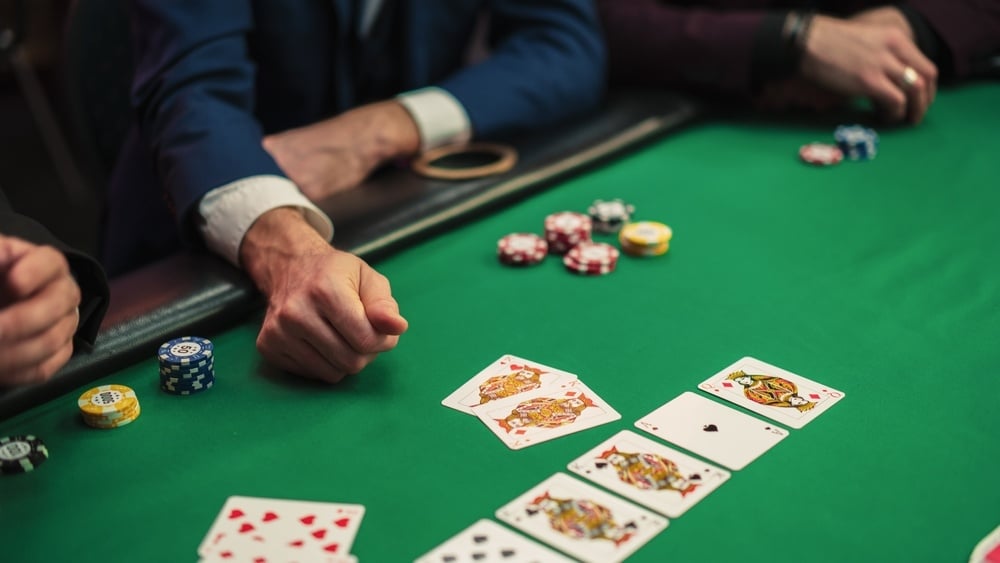
Image Credit: Kitreel/Shutterstock
What is The Best Position in Poker?
A simpler way of looking at the positions around a poker table is they are ranked in reverse order. Here they are from the worst to the best position in poker:
- SMALL BLIND (SB)
- BIG BLIND (BB)
- UNDER THE GUN (UTG)
- UNDER THE GUN + 1 (UTG+1)
- MIDDLE POSITION (MP)
- LOJACK (LJ)
- HIJACK (HJ)
- CUT-OFF (CO)
- BUTTON (BU)
Again the emphasis falls on the BUTTON. It’s an extremely profitable table position both due to reduced threats from players behind them and the ability to get paid off greater amounts. This makes it, arguably, the best of the positions around a poker table.
Remember that when everyone checks to you while you’re on the BUTTON, you have the advantage of choosing the bet size. The same logic applies if someone bets before you and you decide to raise — you have the advantage of acting after them, allowing you to control the betting amount.
How To Group Poker Table Positions
Plainly speaking, hearing terms like LOJACK and HIJACK at a poker table is quite rare. Usually players group the poker position names into three general terms: EARLY POSITION, MIDDLE POSITION, and LATE POSITION.
Strategically this makes things easier. Play tight in EARLY POSITION, standard in MIDDLE POSITION, and loose in LATE POSITION.
These are not hard lines, some are borderline or debatable, but this is how they’re organized:
Early Poker Position
- SMALL BLIND (SB)
- BIG BLIND (BB)
- UNDER THE GUN (UTG)
Middle Poker Position
- UNDER THE GUN + 1 (UTG+1)
- MIDDLE POSITION (MP)
- LOJACK (LJ)
Late Poker Position
- HIJACK (HJ)
- CUT-OFF (CO)
- BUTTON (BU)
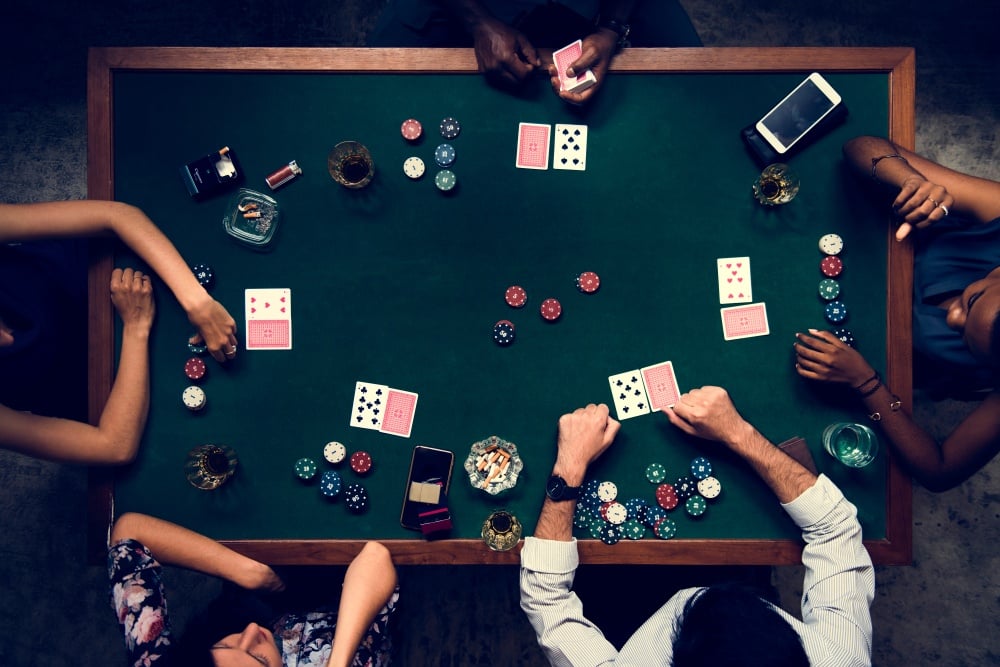
Image Credit: Rawpixel/Shutterstock
Why Is Poker Positioning So Important?
Instead of focusing on the advantages of being ‘in position,’ it’s crucial to understand the drawbacks of being ‘out of position’ in poker.
Playing out of position poker puts you at a disadvantage.
When you’re out of position, you lack the advantage of seeing your opponents’ actions first, leading to more uncertainty and guesswork. You’re playing with incomplete information about your opponents’ hands and intentions, while they have a clearer picture of your actions.
Do your opponents love their hand? Hate it? It’s more unclear — you’re playing poker with less information. But they have that information on YOU.
If You’re Out of Position You Have Less Control
The bigger issue of being out of position in poker is the loss of control. You can’t easily check back or take advantage of betting when opponents check to you, which affects your ability to dictate the pace and size of the pot.
Controlling bet sizes may sound trivial — but is actually critical. Not every hand can be a winner in poker. You must ensure that your wins compensate for the hands you lose, which requires maximizing your profits with strong hands. If you’re not getting sufficient value from your good hands, you’ll go broke with your weak hands.
A true measure of an expert player isn’t just winning, but winning by a significant margin. Playing out of position poker makes achieving these high win rates nearly impossible.
Why? Because it strips away control. The BUTTON is revered as the best position in poker because it puts you firmly in control of the action.
Poker Table Positions FAQ
To make sure you have a complete understanding of the various poker positions and their importance, here are some of the most common questions about poker table positioning and the answer you need:
What is Position in Poker?
Position in poker refers to where a player sits in relation to the dealer button. It is a major strategic factor in poker games as it affects the order in which players act during hands. The later you have to act in a round of betting, the more information you have about your opponents’ actions, making it a more advantageous position.
What is Out of Position in Poker?
In poker, being “out of position” means that you have to act before your opponent during a betting round. This is typically a disadvantage as you have to make your decisions with less information about your opponent’s hand compared to if you were in position.
What is Under the Gun in Poker?
“Under the gun” is a term in poker that refers to the player who must act first in a betting round. This position is immediately to the left of the big blind in games like Texas Hold’em and Omaha. Being under the gun is considered challenging as it requires a player to act without any knowledge of how others might play their hands.
What is The Hijack Position in Poker?
The hijack position in poker is the place two seats to the right of the dealer button, or one seat to the right of the ‘cut-off.’ It’s called the hijack because this position often ‘hijacks’ the advantageous late positions of the cut-off and the button by making a raise, thus putting pressure on them.
What is Lojack in Poker?
The “lojack” position in poker is the place three seats to the right of the dealer button. This spot is typically referred to as the early-middle position at a full poker table. Being in the lojack, you have more information from the actions of the early position players, allowing for more refined decision-making.
Putting Yourself In Position To Win
The ultimate goal in poker is not just to win, but to win by a good margin. When you’re in a strong position, you have more opportunities to outsmart your opponents and capitalize on your strong hands. It’s about playing smart, using your position wisely, and knowing when to push your advantage.
So, whether you’re new to poker or looking to improve your game, understanding and using position effectively can make or break your career. It’s not just about the cards you’re dealt — it’s about where you sit at the table and how you use that to your advantage.
If you’re still getting a feel for in position vs out of position poker, that’s OK — and totally normal! Leveraging the positions around a poker table takes time. Just be aware that even if poker positions remain a blind spot for you, that doesn’t mean their power doesn’t exist.
If you’re just beginning to learn poker strategy, our poker cheat sheets are a great place to start!
Think of the famous poker adage: If you don’t know who the sucker is at a poker table, it’s you. Similarly, if you don’t know if you’re being exploited by playing out of position in poker, you are.

